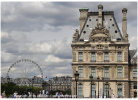Другие журналы

Shaban
Analysis of impact of structural factors on passive safety of truck cabs at a front impact on A-pillars
Engineering Education # 11, November 2013
DOI: 10.7463/1113.0636798
Engineering Education # 11, November 2013
DOI: 10.7463/1113.0636798
The purpose of this paper is to develop methods of improving design of a truck cab at a dynamic impact on A-pillars; the aim of this design is to increase characteristics of passive safety. According to the results of the calculation the authors estimate maximum movements of primary elements of the design and residual living space; the authors analyse behaviour of the door frames, window frames, pillars, frame girders, other elements of the truck cab, etc. The design is experiencing contact, buckling, crumpling, bending, appearance of plastic hinges. To improve the design, the most sensitive areas and locations of plastic hinges were found. As an indirect assessment of stiffness in the cab as a whole, the authors suggest that, besides the recommended living space, acceleration of the mass center of a dummy should be used; the maximum value of acceleration at a certain time interval should be regulated, too. Basing on a comprehensive analysis of the impact of structural factors on passive safety of a truck cab at an impact on A-pillars, modifications to vehicle interior (increased thickness of the main parts of cab doors, introduction of local pads and foam aluminium racks inside the truck cab), which improved truck passive safety. Key words: passive safety, truck cab, pillar, pads, foam aluminium, impact load, LS-DYNA.
Analysis of influence of structural factors on passive safety of a truck cab at a frontal impact
Engineering Education # 08, August 2013
DOI: 10.7463/0813.0580257
Engineering Education # 08, August 2013
DOI: 10.7463/0813.0580257
The purpose of this article is to analyze the influence of structural factors of truck cabs on parameters affecting passive safety (doors, lining boards, use of aluminum foam, etc.). According to the calculation results, the maximum movement of the primary elements of the design was estimated along with the residual living space; the authors also analyzed behavior of door frames, window frames, pillars, side members, the remaining elements of the cabin. The design experiences contact, buckling, wrinkling, bending, appearance of plastic hinges. In order to improve the design, the most flexible areas and areas with plastic hinges were determined. For indirect assessment of the cabin stiffness it was proposed to use, beside the recommended volume of the living space in a cab, acceleration of the mannequin’s center of mass the maximum value of which in a certain moment of time is also specified. Design modifications for the truck cab were developed on the basis of a comprehensive analysis of the influence of structural factors on passive safety on the frontal impact; these modifications improved safety of the truck.
Features of building finite element models of cabins for passive safety studies under the impact according to UNECE Regulations № 29
Engineering Education # 03, March 2013
DOI: 10.7463/0313.0542301
Engineering Education # 03, March 2013
DOI: 10.7463/0313.0542301
The authors developed rational finite element models of truck cabs for studies of passive safety under impact loading executed in accordance with the current standard of passive safety. The obtained results were estimated with consideration of errors and efforts; the problem was solved by means of FEM software (ANSYS and LS-DYNA). The influence of structural factors on the solution (doors, panels, trims, etc.) was also investigated. Calculations based on the finite element method provide one with complete information on the process of emergency loading required for estimating passive safety of truck cabs.
Features of wireframe modeling bodies and cabs of cars while investigating passive safety
Engineering Education # 11, November 2012
DOI: 10.7463/1112.0486675
Engineering Education # 11, November 2012
DOI: 10.7463/1112.0486675
The authors developed finite-element models of different levels for thin wireframe elements of bodies and cabs of cars with consideration of their structural peculiarities; their impact behavior was investigated according to existent standards of passive safety; the obtained results of calculations were evaluated with account for errors and effort put into development and solving this problem by using software systems that implement the FEM (ANSYS and LS-DYNA); basing on those evaluations, rational finite element models were proposed.
| Authors |
| Press-releases |
| Library |
| Conferences |
| About Project |
| Phone: +7 (915) 336-07-65 (строго: среда; пятница c 11-00 до 17-00) |
|
||||
| © 2003-2024 «Наука и образование» Перепечатка материалов журнала без согласования с редакцией запрещена Phone: +7 (915) 336-07-65 (строго: среда; пятница c 11-00 до 17-00) | |||||



